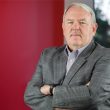The real battle over LightSquared’s network will be about money, not interference
LightSquared is on the defensive these days, as numerous independent studies have sounded the alarm over the company’s plan to build a nationwide wholesale high-speed mobile broadband network that leverages Long-Term Evolution (LTE) technology.
The plan increasingly has come under fire because of the network’s potential to interfere with GPS signals across the United States. The company plans to launch services using L-band satellite spectrum, which sits next to GPS spectrum. However, LightSquared must adhere to certain restrictions, which include keeping signals within their assigned frequencies in the L band.
The company also must work with the GPS sector to test existing GPS-enabled devices to determine what type of interference its transmissions might cause to those devices. (The company is owned by private-equity firm Harbinger Capital Partners, which purchased SkyTerra — the former Mobile Satellite Ventures — about a year ago and then folded it into LightSquared.)
And that is where the public-relations game is being played out. The FCC has mandated that LightSquared and the U.S. Global Positioning System Industry Council (USGIC) establish a technical working group (TWG) to investigate the issues. A final report is due in two weeks. But already many groups are doing their own studies and warning of interference.
Most recently, RTCA Inc. Special Committee 159 released an executive summary of a report that says GPS aviation receivers would be faced with serious interference from transmissions planned by LightSquared in the upper portion of the 1525–1559 MHz band, which is adjacent to the GPS band. RTCA is an organization that writes GPS avionics specifications for the FAA.
Recently, GPS World posted a letter from Bill Range, program director for New Mexico’s 911 system, that indicated law-enforcement, fire-service and EMS representatives tested LightSquared’s network at Holloman Air Force Base in April to determine whether the company’s signals would create interference problems for public-safety communications networks. Range warned that his department’s tests “substantiate concerns that the LightSquared network will cause interference to GPS signals and jeopardize 911 and public safety nationwide.”
All of these scary reports prompted Jeff Carlisle, LightSquared’s executive vice president of regulatory affairs, to hold a teleconference today. He assured that LightSquared and the GPS community can peacefully co-exist.
Carlisle highlighted the fact that the technical working group has tested more than 150 different devices to obtain a broad view of how the systems operate together.
“We have been committed to identifying and resolving the issues through this process. We’re finished testing and will issue a final report,” Carlisle said.
He also cautioned about the various reports that have concluded that interference problems exist. “There are going to be a lot of reports of testing, but the important thing is to understand the types of receivers,” he said. It’s not sufficient to identify interference and say there is interference. You have to take the step of how it is caused and then fix it.”
He makes a good point. All of these independent studies don’t reveal the power levels at which the interference occurred. LightSquared has not hidden the fact that its signals may interfere with highly sensitive GPS receivers, and said it is looking at all options to mitigate any potential interference. Who knows what that might entail, but the GPS community and others have done a good job of lobbying their concerns, e.g., raising the potential for planes to fall out of the sky.
But the report due on June 15 — which has heavy input from the GPS community — should finally paint an unequivocal picture of what the real problems are. The question then is: Who is going to pay to fix it? This is what the fight is really going to be about.
What do you think? Tell us in the comment box below.
Related stories:

















